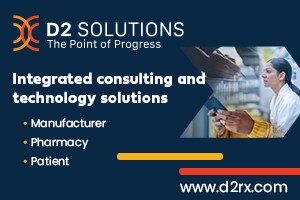We are fortunate to be in a time and place to see new technologies being developed that will improve patient care, safety, and efficiency. These emerging technologies can be implemented in the clinical care area as well as business operations. Artificial intelligence (AI) has been the buzz phrase for the last several years, and many ASCs had no idea what would be coming or how they would use it. Now we are reaping the benefits of this technology as well as other emerging solutions that will make an impact on the way we provide care as well as the whole patient experience.
Here are some of these emerging technologies that the ASC community is discussing.
Innovations Shaping Clinical and Operational Performance
One big area of growth has been the creation of smart operating rooms (ORs) using advanced technologies like AI, robotics, real-time data integration, and automated imaging. These solutions started in the hospitals but now they are becoming more affordable for ASCs, and there are creative financing options allowing surgery centers to access these technologies that can improve the patient experience.
We also are finding that most surgeons coming out of training are using these technologies, and ASCs must provide these surgeons with the equipment they know for a safer patient experience.
Then there are the technologies that allow for improved safety, precision, efficiency, and patient outcomes. For example, enhanced patient safety is being achieved through real-time monitoring of surgical conditions. The design of equipment integration enables us to receive early warning systems for complications (e.g., blood loss, anesthesia issues) and reduced risk of human error with AI-assisted decision making.
We have had access to robotic-assisted surgery for some time, but the refinement of this technology allows for greater dexterity, precision, smaller incisions, and faster recovery times. ORs are also being equipped with high-resolution monitors, allowing for increased accuracy during surgical procedures. We also are utilizing AI to capture real-time operative notes as surgeons dictate while they are performing surgery. This technology goes by a few names, including ambient documentation.
Augmented reality/virtual reality (AR/VR) is revolutionizing surgical education and training of surgeons, nurses, and surgical technologists. These technologies allow the surgical team to rehearse procedures, thereby improving competency of the team, especially with higher-acuity cases. The technology also allows for the refinement of skill and education, and we can measure and document improved competency. High-definition imaging, AR/VR guidance, and navigation tools are helping ensure improved accuracy of incisions, reduced tissue damage, and faster healing. We are seeing AR/VR technologies experience increased adoption for us during orthopedic and minimally invasive spine procedures in ASCs.
Another area where workflow efficiency improvements are being achieved is through the seamless coordination between the surgical team. This includes automated OR equipment adjustments and real-time data sharing with an electronic health record (EHR) system, which also improves efficiency. The collection of real-time OR data with EHR input empowers an ASC to better measure utilization and ensure seamless, consistent documentation.
The surgical team can make data-driven decisions using analytics to track performance, outcomes, and continuous improvement. AI algorithms are driving decisions for optimal customized surgical approaches that surgeons have lacked access to in the past. Digital integrations may allow for faster procedures through the use of automation and guidance systems. Shorter anesthesia times and reduced surgical fatigue allow for quicker patient recovery and lower risk of infection. The resource optimization also allows for fewer complications and lower overall costs.
ASC Specialty-Specific Technologies to Know
Here are some other technologies we see emerging for ASC specialties.
We are seeing the utilization of 3D-printed implants in orthopedics that are customized to the patient. We are also seeing the use of sensors in joint replacement procedures and mobility braces that track healing and alignment. The data captured in these ways has been found to impact the recovery plan of care, thus allowing for improved outcomes.
Eye surgeons are seeing improvement of technique with the use of femtosecond lasers, which allows for higher accuracy for corneal incisions and lens fragmentation.
Gastroenterology has seen many emerging technologies. These include AI-assisted endoscopy, which has improved the detection of polyps during colonoscopies. There is also new technology for capsule endoscopy using pill-sized cameras. We have had these cameras for many years, but now there is AI interpretation for small intestine imaging.
ASCs with otolaryngology (ENT) are increasingly utilizing robotics and navigation. With these technologies, ENT physicians gain an improved the ability to perform minimally invasive removal of throat and laryngeal tumors — procedures which are being performed in ASCs more frequently.
The use of robotic technology for outpatient hernia repairs has improved technique precision and led to shorter recovery time for patients.
The use of 3D imaging and implant printing in plastic and reconstructive cases have increased and improved outcomes for patients.
Pain management has also seen advances with the use of stem cell injections for spine treatments, which can allow for minimally invasive treatments and improved treatment of pain.
Adoption Requires Strategy, Not Just Speed
These are just a few of the emerging technologies making their way into ASCs. While I focused largely on the use of such technologies in the clinical areas of surgery centers, I am seeing new technologies being utilized in administration and revenue cycle as well. The use of advanced patient engagement platforms and payment portals are becoming more commonplace. In revenue cycle, solutions like computer-assisted coding and prior authorizations are making a positive impact.
The number of emerging technologies developed for and that can be used by ASCs continues to grow, and what we are doing now can significantly change in a short period of time. While it can be tempting to adopt many of these new technologies, ASCs need to pause and always ensure each decision made will improve the patient experience.





